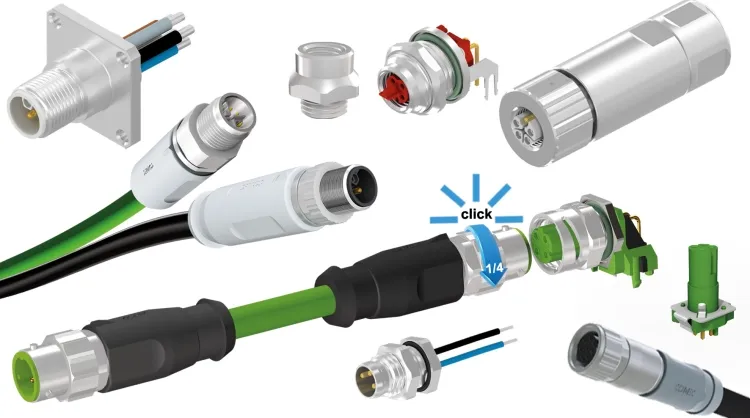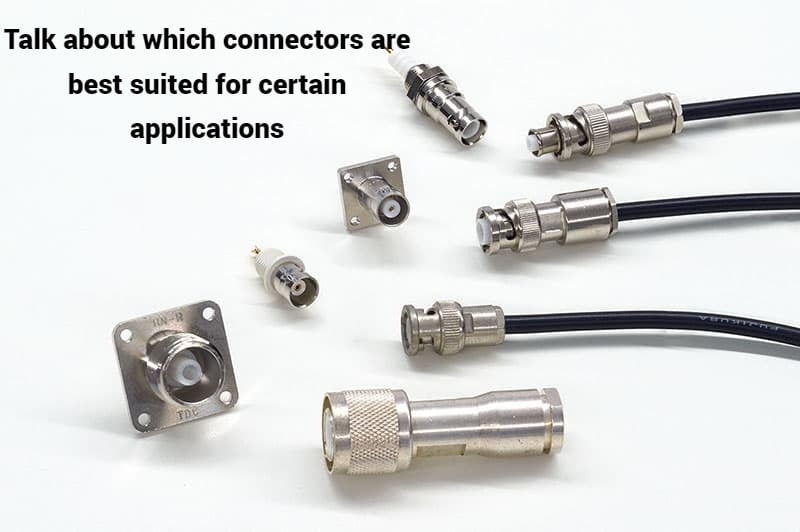Connectors: Vital Components for Seamless Electrical Operations...!!!
Connectors are indispensable components in modern electrical and electronic systems. With their diverse types, materials, and applications, connectors ensure reliable and efficient connections, contributing to the seamless operation of various devices and systems.

Connectors, also known as electrical connectors, are crucial components in both electrical and electronic systems. They facilitate the transfer of electrical signals or power from one device to another, ensuring smooth operation of various electrical circuits. Connectors are utilized in a vast array of applications, ranging from consumer electronics to industrial machinery, automotive systems, and telecommunications.
History of Connectors
The evolution of connectors dates back to the early days of electrical engineering when connecting electrical circuits became necessary. Initially, simple screw terminals and binding posts were used for making electrical connections. As technology progressed, so did the design and complexity of connectors.
The early 20th century saw the invention of the banana plug, marking a significant milestone in connector technology. This innovation was followed by the development of various connectors, such as RCA connectors for audio and video applications, and the widely used USB (Universal Serial Bus) connectors, which transformed data transfer and charging for electronic devices.
Types of Connectors
Connectors come in various types, each designed to meet specific requirements and applications. Some common types of connectors include:
-
Wire-to-Wire Connectors: These connectors are used to join two or more wires together, commonly found in automotive and industrial applications. Examples include crimp connectors, butt connectors, and twist-on wire connectors.
-
Wire-to-Board Connectors: These connectors interface wires to printed circuit boards (PCBs). Widely used in electronic devices, they include types such as Molex connectors, JST connectors, and header connectors.
-
Board-to-Board Connectors: These connectors join two PCBs, allowing for the transfer of signals or power between them. They are used in compact electronic devices, such as smartphones and laptops. Examples include mezzanine connectors and edge card connectors.
-
RF Connectors: Designed for radio frequency (RF) applications, these connectors are used in communication systems, antennas, and test equipment. Common types include coaxial connectors such as BNC, SMA, and N-type connectors.
-
Fiber Optic Connectors: These connectors are used in fiber optic communication systems to join and align optical fibers. Examples include SC, LC, and ST connectors, which ensure low signal loss and high-speed data transfer.
-
Power Connectors: These connectors handle high current and voltage, providing reliable connections for power distribution. Examples include IEC connectors, Anderson Powerpole connectors, and industrial-grade connectors like the CEE 17.
-
USB Connectors: USB connectors are widely used for data transfer and charging in consumer electronics. They come in various types, including USB-A, USB-B, USB-C, and Micro-USB.
Composition and Materials
Connectors are made from various materials to ensure durability, conductivity, and reliability. Common materials used in connectors include:
-
Metals: Metals such as copper, brass, and aluminum are used for the conductive parts of connectors, providing excellent electrical conductivity and corrosion resistance.
-
Plastics: Insulating components of connectors are often made from high-quality plastics, such as polycarbonate, PVC, and nylon, providing electrical insulation and mechanical strength.
-
Gold and Silver Plating: To enhance conductivity and prevent corrosion, connector contacts are often plated with precious metals like gold or silver, ensuring reliable connections and reducing signal loss.

Uses and Applications
Connectors play a vital role in various applications, including:
-
Consumer Electronics: Connectors are used in devices such as smartphones, tablets, laptops, and home entertainment systems to facilitate data transfer, charging, and signal transmission.
-
Automotive Industry: In vehicles, connectors link various electrical systems, including lighting, infotainment, engine control, and safety systems.
-
Industrial Machinery: Connectors are essential in industrial equipment, providing reliable connections for sensors, actuators, control systems, and power distribution.
-
Telecommunications: Connectors are used in communication infrastructure, including cell towers, fiber optic networks, and data centers, ensuring seamless data transmission.
-
Medical Devices: In the healthcare industry, connectors are used in medical equipment, such as diagnostic devices, monitoring systems, and therapeutic equipment, ensuring accurate and reliable performance.
Benefits of Connectors
The benefits of using connectors include:
-
Versatility: Available in various types and sizes, connectors cater to different applications and industries.
-
Ease of Use: Connectors provide a convenient and efficient way to connect and disconnect electrical circuits without the need for soldering or complex tools.
-
Reliability: High-quality connectors ensure stable and reliable connections, reducing the risk of signal loss, interference, and electrical faults.
-
Modularity: Connectors allow for modular design, enabling easy maintenance, upgrades, and replacement of components.
-
Safety: Providing secure and insulated connections, connectors reduce the risk of electrical shocks and short circuits.
In conclusion, connectors are indispensable components in modern electrical and electronic systems. With their diverse types, materials, and applications, connectors ensure reliable and efficient connections, contributing to the seamless operation of various devices and systems. As technology continues to advance, the importance of connectors in our daily lives remains ever relevant.
What's Your Reaction?

















